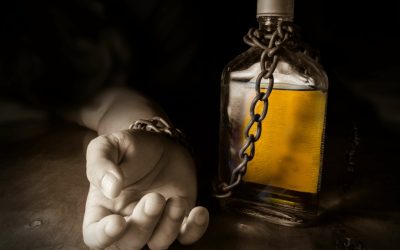The cumulative frequency of remission as a function of time since the onset of dependence, based on Lopez-Quintero et al.’s (2011) report. The smooth curves are based on the negative exponential equations listed in the figure. Some say those who engage in substance abuse are in complete control of their actions. The person we call an addict always monitors their rate of consumption in relation to relevant circumstances. For example, even in the most desperate, chronic cases, alcoholics never drink all the alcohol they can. They plan ahead, carefully nursing themselves back from the last drinking binge while deliberately preparing for the next one.
- Imagine that what we knew about addiction was restricted to those individuals who make up the right-hand tails of the cumulative distribution curves in Figure Figure1.1.
- Disease does not equate non-accountability and assuming certain consequences solely based on a diagnosis is a mistake.
- Thus, the question is not whether addiction has a biology, which it must, but whether it is sensible to say that addicts use drugs compulsively.
- The analogy of somebody hanging onto a cliff is often used, indicating that the individual can only hang on for so long before their strength is completely depleted and she has to let go [37].
Persistent impacts of smoking on resting-state EEG in male chronic smokers and past-smokers with 20 years of abstinence
Evidence that a capacity for choosing advantageously is preserved in addiction provides a valid argument against a narrow concept of “compulsivity” as rigid, immutable behavior that applies to all patients. If not from the brain, from where do the healthy and unhealthy choices people make originate? To resolve this question, it is critical to understand Top 5 Advantages of Staying in a Sober Living House that the ability to choose advantageously is not an all-or-nothing phenomenon, but rather is about probabilities and their shifts, multiple faculties within human cognition, and their interaction. Yes, it is clear that most people whom we would consider to suffer from addiction remain able to choose advantageously much, if not most, of the time.
Addiction and Choice: Theory and New Data
Through my work, I have connected with thousands of people in recovery from addiction. Listening to their stories, I am always struck by a common thread of trauma experience, exacerbated https://thearizonadigest.com/top-5-advantages-of-staying-in-a-sober-living-house/ with symptoms of mental illness. Doing anything less will continue the cycle of blame, shame and punishment that contributes both to isolation and people feeling bad about themselves.
Box 1 What’s in a name? Differentiating hazardous use, substance use disorder, and addiction
One of the most common signs for determining if someone is as risk for addiction is to uncover whether there is a history of past addiction in their family. This supports the argument that addiction is a disease because if choice was the main factor in addiction, a person’s family history would have little bearing on their chance for becoming addicted as well. Although our principal focus is on the brain disease model of addiction, the definition of addiction itself is a source of ambiguity.
The Disease Model of Addiction
- Two, and this comes later in the book, opiate addiction in Vietnam veterans may have implications for the study of addiction in broader populations.
- Therefore, it seems best to use disorder and disease both interchangeably to indicate the disruptive nature of addiction without inferring what the cause is of addiction, by explicitly stating that disease does not automatically imply a brain disease.
- This approach not only benefits individuals with addiction but also society as a whole.
- The suffering that comes along with addiction can be immense, but treatment offers a ray of hope for the future.
- Beyond the stigma, there is a branch of modern researchers that strongly insists that addiction is a choice and uses evidence to support their argument.
Intense highs that come on rapidly also tend to dissipate quickly,1 and the quicker comedown may further encourage drug abuse. Finally, we argue that progress would come from integration of these scientific perspectives and traditions. Wilson has argued more broadly for greater consilience [109], unity of knowledge, in science. A plurality of disciplines brings important and trenchant insights to bear on this condition; it is the exclusive remit of no single perspective or field. Moreover, those who suffer from addiction will benefit most from the application of the full armamentarium of scientific perspectives.


The Disease Model of Addiction: What It Means and How It Works
- They share characteristics with other medical diseases, yet have their own unique features.
- He also points out an interesting exception; American military men who served in Vietnam showed an astonishing 40% rate of addiction to opiates following their use.
- It is argued that to a certain extent, addicts may very well be able to control themselves or respond to reasons, but this ability can be depleted at times, particularly as a result of cravings.
- This new generation of addicts included individuals who were employed, married, and well-educated (e.g., Waldorf et al., 1991).
- Likewise, nearly one in four people over the age of 18 with any mental illness also had a drug use disorder, and more than a third of those with a serious mental illness had a drug use disorder.
Deja una respuesta